
The Crozier Pharaohs is a 1984 mystery detective novel by the British writer Gladys Mitchell. It is the sixty sixth and last in her long-running series featuring the psychoanalyst and amateur detective Mrs Bradley. The series stretched back to the debut novel Speedy Death in 1929, during which time Bradley had barely aged or changed except for acquiring a damehood. It was published posthumously following Mitchell's death the previous year.

The Rising of the Moon is a 1945 mystery detective novel by the British writer Gladys Mitchell. It is the eighteenth in her long-running series featuring the psychoanalyst and amateur detective Mrs Bradley. It has been described as one of the best of Mitchell's novels.

Lament for Leto is a 1971 mystery detective novel by the British writer Gladys Mitchell. It is the forty fourth in the long-running series of books featuring Mitchell's best known character, the psychoanalyst and amateur detective Mrs Bradley. It is a loose sequel to the 1937 novel Come Away, Death with several of the characters reappearing.

Dead Men's Morris is a 1936 mystery detective novel by the British writer Gladys Mitchell. It is the seventh in her long-running series featuring the psychoanalyst and amateur detective Mrs Bradley. It was the first to be published by Michael Joseph who released all the subsequent fifty nine novels in the series. It was later republished with the alternative title Death Comes at Christmas.

A Three-Pipe Problem is a 1975 mystery detective novel by the British writer Julian Symons. A pastiche of the original Sherlock Holmes stories by Arthur Conan Doyle, it takes place in the present day. The title refers to a line spoken in The Red-Headed League, referring to a particularly tricky problem that will take Holmes the time it takes to smoke three pipes to solve. It was followed by a sequel The Kentish Manor Murders.

The Evil Shepherd is a 1922 mystery thriller novel by the British writer E. Phillips Oppenheim. It was published in the United States by Little, Brown. Oppenheim was a prolific writer whose novels enjoyed great popularity during the era.
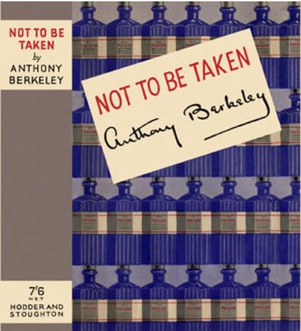
Not to Be Taken is a 1938 mystery detective novel by the British writer Anthony Berkeley. It was one of several stand-alone novels he wrote alongside his series featuring the private detective Roger Sheringham. It was written when the Golden Age of Detective Fiction was at its height. It was published in the United States with the alternative title A Puzzle in Poison.

Green Battlefield is a 1943 war thriller novel by the British writer Victor Canning. It was published by Hodder & Stoughton and was the only novel he wrote during his military service in the Royal Artillery. Although comparatively successful, and reprinted in 1944, Canning himself was later dismissive of the novel saying "It was a topical book. I spun it off to cash in on the war story thing. It was quite a competent story, but nothing I’d want in the canon of works!." Nevertheless, it was translated into Italian and French, the first time his work had appeared in those languages.
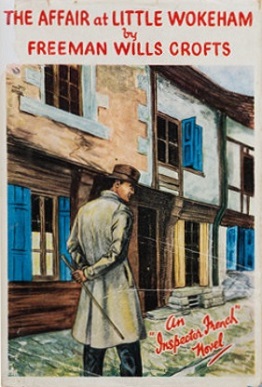
The Affair at Little Wokeham is a 1943 detective novel by the Irish writer Freeman Wills Crofts. It is the twenty-fourth in his series of novels featuring Inspector French, a prominent figure of the Golden Age of Detective Fiction. It was published in the United States under the alternative title of Double Tragedy.
Barbara Wilson is the pen name of Barbara Sjoholm, an American writer, editor, publisher, and translator. She co-founded two publishing companies: Seal Press and Women in Translation Press. As Barbara Sjoholm, she is the author of memoir, essays, a biography, and travelogues, including The Pirate Queen: In Search of Grace O’Malley and Other Legendary Women of the Sea, which was a finalist for the PEN USA award in creative nonfiction. She is also a translator of fiction and nonfiction by Norwegian and Danish writers into English, and won the Columbia Translation Award and the American-Scandinavian Translation Award. As Barbara Wilson, she has written two mystery series and has won several awards for her mystery novels, including the British Crime Writers Association award and the Lambda Literary Award. She is known for her novel Gaudi Afternoon, which was made into a film directed by Susan Seidelman in 2001.
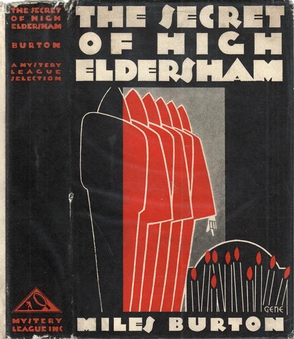
The Secret of High Eldersham is a 1930 detective novel by Miles Burton, the pen name of the British writer Cecil Street. It was the first novel in a lengthy series featuring the detective Desmond Merrion. Street was one of the most prolific authors of the Golden Age of Detective Fiction and had already enjoyed success with his Doctor Priestley series, written under the name of John Rhode. In 1931 it was published in the United States by the Mystery League under the altered title The Mystery of High Eldersham. Originally published in Britain by the Collins Crime Club, it was reissued in 2016 by British Library Publishing as part of a series of crime novels the Golden Age.

The Claverton Mystery is a 1933 detective novel by John Rhode, the pen name of the British writer Cecil Street. It is the fifteenth in his long-running series of novels featuring Lancelot Priestley, a Golden Age armchair detective. It was published in the United States by Dodd Mead with the altered title The Claverton Affair. The tone of the book has been described as much darker than the author's other novels.

Mr. Westerby Missing is a 1940 detective novel by the British writer Cecil Street, writing under the pen name of Miles Burton. It was the twenty-second in a series of books featuring the detective Desmond Merrion and Inspector Arnold of Scotland Yard. It was published in the United States by Doubleday the same year.

Proceed with Caution is a 1937 detective novel by John Rhode, the pen name of the British writer Cecil Street. It is the twenty-seventh in his long-running series of novels featuring Lancelot Priestley, a Golden Age armchair detective. It was published in the United States the same year by Dodd Mead under the alternative title Body Unidentified.
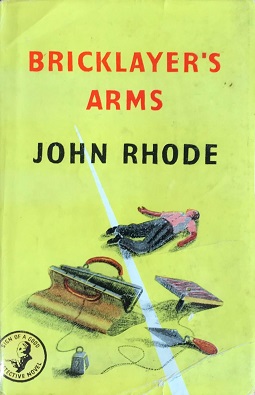
Bricklayer's Arms is a 1945 detective novel by John Rhode, the pen name of the British writer Cecil Street. It is the forty first in his long-running series of novels featuring Lancelot Priestley, a Golden Age armchair detective. It was published in America by Dodd Mead under the alternative title Shadow of a Crime. It was particularly notable for the lesser role played by Priestley, with the case being solved largely by Inspector Waghorn of Scotland Yard alone.

Peril at Cranbury Hall is a 1930 detective novel by John Rhode, the pen name of the British writer Cecil Street. It marked the eight appearances of the armchair detective Lancelot Priestley, who featured in a long-running series of novels during the Golden Age of Detective Fiction. The use of the cipher inspired a similar one used in Dorothy L. Sayers's Have His Carcase

They Watched by Night is a 1941 detective novel by John Rhode, the pen name of the British writer Cecil Street. It is the thirty fifth in his long-running series of novels featuring Lancelot Priestley, a Golden Age armchair detective. It was published in the United States by Dodd Mead with the alternative title Signal for Death.
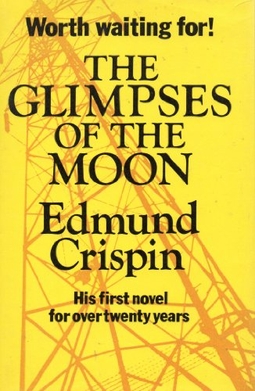
The Glimpses of the Moon is a 1977 detective novel by the British writer Edmund Crispin. It was the ninth and last novel in his series featuring Gervase Fen, an Oxford professor and amateur detective. Written from the 1960s onwards on publication it was the first novel in the series to be released since The Long Divorce in 1951. The author died the following year and in 1979 a final work Fen Country, a collection of short stories featuring the detective, was publish posthumously.

While She Sleeps is a 1940 mystery thriller novel by the British writer Ethel Lina White. White was an established author of mysteries and thrillers by this stage, and the novel was published by the Collins Crime Club and Harper Brothers.

She Faded into Air is a 1941 mystery novel by the British writer Ethel Lina White, originally published by the Collins Crime Club]. It received relatively mixed reviews, but White followed it up with her success Midnight House in 1942. Although published at the height of the Second World War, the novel makes no reference to the ongoing conflict, a common feature of wartime mystery and detective novels.



















